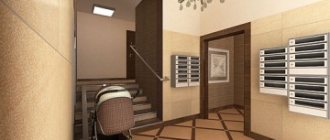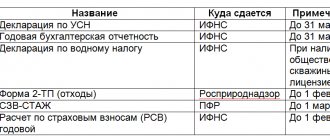Many Russians have recently become concerned about what this line in the payment receipt is - “MOP electricity”. This increased interest in most cases is explained simply - the amounts appearing there look quite substantial, and sometimes they are even higher than the basic payment for the used light in the apartment.
First of all, it is worth explaining that the definition of MOP is as follows: “public places.” That is, in this case we mean electricity spent on lighting:
- landings;
- elevators;
- entrances to the entrances;
- basements;
- attics, etc.
What is MOP
MOP are common areas in an apartment building: entrance, staircase, area in front of the house, porch, attic, basement and landing. It is used to reduce printing space. But at the legislative level it does not mean anything.
The MOP cannot be demolished, sold or altered without the written consent of each of the residents of the building. No resident may use this area for personal purposes.
Despite this, the MOP can be used by everyone without exception: a delivery person, a relative of a resident, or a passerby during the rain.
Typically, the furnishings in such places are not very sophisticated, and the residents themselves or the management company responsible for the house are responsible for cleaning.
All the places listed in the image are MOP, but not everyone has access there; for example, you can’t just get to the roof or basement
Calculation of electricity charges
The calculation of MOP electricity depends on whether the house is equipped with general metering devices or not. When the meter is not installed, the formula below is used.
PE = N * PN*PC/OP , where:
- О – consumed energy;
- N – standard expenditure per citizen, determined by Government Decree No. 354 of 2011;
- PN - the size of the common premises in the apartment building;
- PC – apartment area;
- OP – the size of the entire house excluding non-residential premises.
To calculate the cost of services provided, you need to multiply the value obtained as a result of the calculation by the current tariff . To understand how payment is calculated, a specific example should be given.
The region has established a consumption standard of 2 kW per square meter. The size of non-residential premises is 200 square meters, of which 40 square meters are the property of citizen I. The total area of residential premises is 1600 square meters. The tariff is 3.25 rubles/kW.
The calculation will be as follows: 2*200*40/1600 = 10 *3.25 = 32.5 rubles.
Calculating payment in a house where there is a meter
When an apartment building is equipped with a common meter, a different formula should be used.
OP = (PO-KN-KZHS-KZHSS-EO)*RK/OP , where:
- OP – volume of energy consumed;
- PO – indicator of a common house metering device;
- KN – kW value in non-residential premises;
- KZhS – electricity consumption by apartments not equipped with meters;
- KZhSS – the amount of resource used in premises equipped with metering devices;
- EO – energy spent on heating water and heating;
- RK – the size of a specific apartment;
- OP – total area of the building.
To calculate the total amount of payment per month, you need to multiply the resulting figure by the tariff.
For example, by the end of the month the general meter indicated a value of 16,000 kW. This amount includes 10,000 kW, which is consumed by premises equipped with meters. Apartments not equipped with meters accounted for 5,000 kW. The total size of residential premises is 5000 square meters.
A separate apartment is 40 square meters, the tariff is set as before - 3.25 rubles/kW.
Payment: (16000-10000-5000)*40/5000 = 8 kW * 3.25 = 26 rubles.
What will affect the payment for electricity MOP
Electricity for SOI in a house that is not equipped with a common meter is paid in accordance with current regulations. To achieve this, payment for all energy consumed is divided among residents . The amount of payment depends on the size of the apartment owned by the citizen.
At the same time, the amount of electricity consumed for individual purposes does not affect the amount. When a meter is installed in the house, certain factors will influence the calculation.
Including:
- the condition of the electrical system in the house;
- timely submission of readings from all meters;
- the number of premises equipped with such devices.
If the house has offices, shops or beauty salons, the receipt may contain a large amount for the payment of MOP electricity. This applies to situations where tenants have not entered into electricity supply agreements.
Important! The absence of such an act indicates the need to divide the consumed resource between apartment owners.
Terms of use
According to Article 224 of the Civil Code, the MOP is the common property of all residents; it cannot be divided, but can be shared property. Anyone can use the MOP, but items located in the MOP can only be used with the congratulations of the owner.
All MOP owners are required to maintain cleanliness, clean, repair and pay taxes.
Each owner has equal rights and responsibilities, however, tenants with a larger apartment area will pay more for ODN.
Where did this expense item come from?
Currently, comprehensive reform of the housing and communal services sector is ongoing in Russia. As a result, many enterprises that provide relevant services to the population systematize their own relationships with consumers, which mainly include people living in high-rise buildings.
They carry out their activities on the basis of a government decree issued back in 2006, number 307. This document regulates the organization of accounting for general household consumption of household services. In particular, a rule appeared there according to which it is necessary to charge for electricity not only consumed in apartments, but also used for general needs.
In 2011, the government also adopted another regulatory act (No. 354) systematizing:
- issues of payment for housing and communal services;
- its frequency;
- the procedure for accounting for resources;
- rights, and equally obligations of the parties, etc.
According to Resolution 354, tariffs for the following utilities are also now calculated:
- heating;
- hot water supply;
- electricity.
Thus, since 2011, electricity spent for the common needs of all residents is no longer included in the maintenance of housing and a different standard is used in the calculation.
Accordingly, the cost was entered as a separate line in the bills. Based on the new format, the total consumed services are distributed among the owners or tenants of the premises. However, many citizens still do not have a clear idea of what they actually pay management companies for.
Payment for electricity in a separate column on the receipt
It turns out that, according to established legislation, the cost of electrical energy spent on lighting the MOP is included in the payment for the electrical utility service. And even with the installation of a common house metering device, citizens are not yet ready to pay for electricity in an amount that exceeds their actual electricity consumption inside the residential premises. Summary. 1. MOP energy supply is a public service. 2. This service is provided to apartment owners, which means they must pay for it based on the readings of the common building electricity meter. 3. Taking into account the fact that the MOP energy supply service is provided by energy supply companies on the basis of agreements with homeowners associations or management organizations, the latter must be responsible for paying for this service. 4.
Liability for non-payment
Based on agreements with resource supply companies, homeowners' associations and management companies are obligated to pay for the resources provided, since they are providers of utility services. The energy supplier has the right to sue for non-payment with a demand to collect the debt, and the court, in most cases, satisfies these claims. In turn, the management company and the homeowners association file claims to collect the debt from the owner, since it is his responsibility to pay for the utility resource provided to him.
Reforming the housing and communal services brings a number of innovations that residents of the country cannot always immediately understand. The appearance of a new item “MOP electricity” on the receipt was no exception. Poor awareness of the population about what this service is leads to reluctance to pay for it. Each owner should know that the power supply of premises related to common areas is a service that has always existed, but became a separate type relatively recently, so the responsibility for paying for it lies on his shoulders. To resolve problems or disputes related to the provision of this service, it is recommended to contact the Criminal Code.
Related topics:
- Logbook for recording orders for personnel How to do DO Before you rush to create a logbook for registering internal documents in Excel, you need to answer...
- Deregister a car Deregistration Until July 2017, before disposing of a car, it was necessary to deregister it...
- Electricity benefits In accordance with current legislation, pensioners are entitled to benefits for housing and communal services. IN…
Judicial precedents
At the same time, several years ago, citizens living in the city of Livny, located in the Oryol region, managed to prove in court that they were illegally overcharged for electricity supply to the MOP.
Moreover, the city prosecutor’s office filed a lawsuit against the management company (Zhilservice). Its employees were forced to do this because they received complaints almost every day from citizens living in houses managed by the above-mentioned business entity.
People were sent payments with huge sums, the size of which significantly exceeded the fee for energy consumption in apartments.
It took both judicial and prosecutorial officials a lot of time to study all the documents presented, as well as the current ones:
- standards;
- techniques;
- instructions.
As a result, it was possible to establish that the problem arose due to incorrect application of the calculation formula. The prosecutor's office noted that representatives of the energy supply company took into account the electricity costs declared by consumers themselves, while they should have relied only on the data received from the meters.
Revealing the secret
I’ll say right away that I’m giving a specific example, the figure changes depending on the region: for the maintenance of MOP per 1 m2 of apartment area, the tariff is 9.99 rubles, which, for example, for an apartment of 63 m2 - an ordinary three-room apartment - is 630 rubles. So, what is included in the mysterious 9.99 tariff:
Maintenance of the entrance – 1.10 rubles.
- Sweeping the floor every working day.
- Washing the floor - once a month, the 1st floor landing and the elevator car - every working day.
- Washing windows, walls, entrance doors and radiators – once every six months.
- Cleaning the attic and basement – once a year.
- This also includes maintenance and cleaning of the garbage chute, but we don’t have one.
For more precise standards for cleaning entrance premises, see the article “Our home is our fortress.”
Cleaning the local area – 2.40 rubles.
- Sweeping sidewalks and areas near the entrance in the warm season - Monday, Wednesday, Friday.
- Emptying bins and collecting garbage from the rest of the territory is the same.
- Removing snow from sidewalks in winter - as it falls.
- Mowing the grass - 2 times in the summer.
- Painting of equipment for children's and sports grounds, and other decorative elements - once a year in the summer. Repairs - as needed.
- Clearing the roof of snow, eliminating icicles and ice - as necessary.
Preparing apartment buildings for the summer and winter seasons – 1.31 rubles.
- Pressure testing, repair and flushing of the heating system - once a year.
- Replacement of broken glass, repair of windows and doors - as necessary.
- Cleaning of ventilation shafts – once a year.
Minor repairs and inspection of the condition of the MOP - 1.60 rubles.
- Checking the operation of the ventilation system, smoke removal system, maintenance and replacement of small parts in electrical equipment - once every six months.
- Elimination of emergency situations - as necessary.
- Deratization and disinfestation (control of rodents and insects) – once a year.
- Checking the operation of MKD engineering systems and eliminating minor problems - constantly.
- This also includes maintenance of gas equipment - once every 3 years, but we don’t have it.
Current repair of MOP – 3.58 rubles.
- Repairing broken doors, windows, railings - as needed.
- Entrance repairs - whitewashing, painting, plastering - once every 5 years.
- Roof repair and elimination of moisture leaks - as necessary.
- In a panel house - restoration of seams between slabs - as necessary, but at least once every 5 years.
- Repair of engineering systems and equipment - as necessary.
- Restoring sidewalks, roads and blind areas to normal appearance when they are destroyed - as necessary.
- Other repairs to equipment that is in common ownership - as necessary.
If anyone noticed, garbage removal is not on this list, just like there are no other types of work. This is because in our receipt they are listed as separate lines and are not included in the MOP maintenance.
Tricks of the Criminal Code
Have you noticed how much work is done as needed? No, of course, they will actually be completed, but there is a suspicion that these types of work are included in the calculation with a fair margin.
On the one hand, if we take care of our common property, the management company or homeowners association will keep more of the money collected for themselves. On the other hand, the management organization will be able to carry out more work to improve and improve the comfort of the home with a larger amount of stored funds.
And if you are not lazy and create a house council, it will check that not a single penny collected from the residents goes to inappropriate needs.
The MOP existed during Soviet times - nothing has changed in this regard. The only thing that has changed is that we now pay for its maintenance ourselves, and our rich state does not have funds for the needs of housing and communal services.
Let me say goodbye. I hope that the article was useful, so subscribe to new articles on our site and share a link to them with your friends and family on social networks.
Problems in calculating MOS lighting
Why is the problem of lighting in public spaces so acute, since residents had previously paid for this service as part of another item. Until 2012, the amount for the item “repair and maintenance of housing stock” was calculated according to the tariff, i.e. was fixed.
Currently, with public meters, they use actual readings, which may vary throughout the year. The indignation regarding payment for lighting of common areas began when residents began to receive receipts in which the amount for lighting of common areas exceeded individual consumption. This is where the problem arises.
Energy losses in MKD
In addition to actual readings, a collective electricity meter shows electricity losses in intra-house networks that arise for a number of reasons:
- Outdated electrical wiring and lack of energy-saving electrical equipment in common areas. For example, the lack of energy-saving light bulbs.
- Breakdown of the individual meter. A faulty meter does not reflect actual resource consumption. There are often cases when residents of a house deliberately do not notify the energy supply organization about a breakdown and use special devices to prevent the device from working correctly.
- Illegal connection to the public network. Independent connection to the line, bypassing the meter, and the absence of an agreement with the energy retailer also lead to non-accounting of the resource.
- Lack of proper organization for recording data from metering devices in the house. For example, taking individual apartment meter readings from the 23rd to the 27th of the month, and taking collective meter readings on the 29th, leads to significant data distortion.
- Inefficient use of electrical equipment on common property (lights on during the day, strong lighting at night)
Maintenance, repair and maintenance of electrical networks is carried out by a management company, to which the owners pay for the maintenance of public property, including intra-house electrical networks. In case of improper performance of duties, leading to possible reasons for increasing energy costs in premises that are part of common areas, residents have the right to demand high-quality maintenance and replacement of equipment.
An important factor in the indignation of residents related to the incorrect calculation of the amount for electricity spent on lighting common areas is the so-called “payment for a neighbor.” Unscrupulous residents transmit false data, connect bypassing the meter, etc., which leads to losses that the HOA and management company distribute among the owners.









